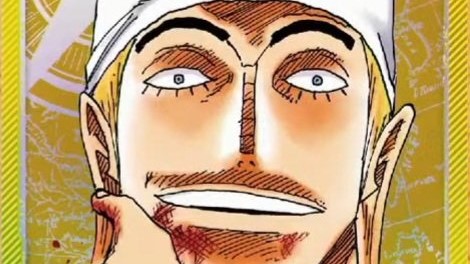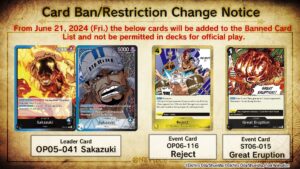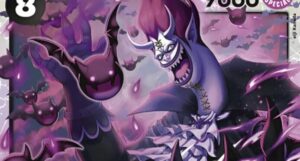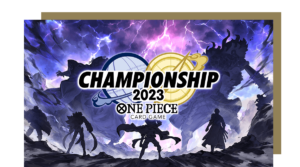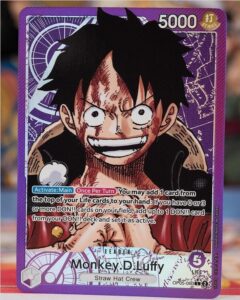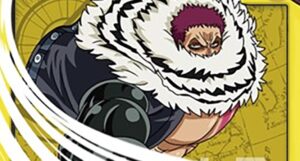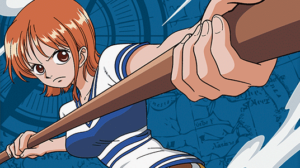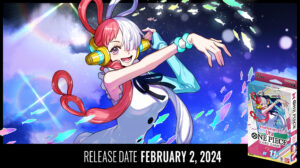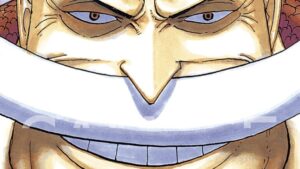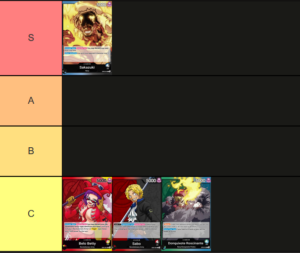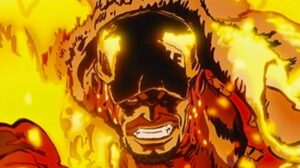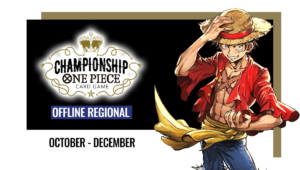Table of Contents
Since its introduction in OP-03, the yellow color has quickly established itself among the most played colors, thanks in particular to the Katakuri Leader, the only leader competing in terms of presence against the red dominance (Whitebeard, Law, and Zoro).
Featuring a unique gameplay mechanic based on life point management (hello Katakuri and Lilin), playing on the element of surprise, especially with numerous trigger cards (hello Brulee and Perospero), yellow decks have quickly gained a reputation for hitting hard and managing to 'steal' games that seemed lost from the start, both in OP03 and OP04.
Well, OP05 is not about to make an exception, with the arrival of a leader highly anticipated by fans (and not just because he has a design inspired by the famous rapper Eminem). I'm talking, of course, about one of the most popular villains in the One Piece saga: Enel!
As we can see, Enel is the first mono-colored leader with only 4 life points. At first glance, this may seem like a weakness compared to leaders with 5 life points, but this weakness is actually compensated by the leader's effect. Once per turn, and during the opponent's turn, if your life points drop to 0, you can take the top card of your deck and add it to your life points, then discard a card from your hand. So, your life points go from 0 to 1, and your opponent will have to attack you again at least twice if they want to finish you off. This adds a lot of survivability to the leader and allows him to be quite aggressive in the game, especially with the new cards from OP05.
Enel is accompanied in the release of OP05 by numerous cards labeled Sky Island, which bring new possibilities and combos to the table. Among them is Sura, which allows you to fetch Sky Island cards.
Ohm, on the other hand, looks at the top 5 cards of your deck, draws a Holy (5000 power vanilla cards), and places it on the field. Ohm also gains 1000 power if you have 2 life points or less. Another one of Enel's right-hand individuals is Gedatsu, who, when played, KOs an opposing character with power equal to or less than the opponent's remaining life points.
We also have Hotori and Kotori, who synergize together, along with Satori, a counter that can also be put on the board if obtained on a trigger. On the event side, there is El Thor, a defensive event as formidable, if not more, than Radical Beam!! with a trigger effect that KOs an opposing character with power equal to or less than the opponent's remaining life points.
Next up is Two-Hundred Million Volts Amaru, which will give your leader or one of your characters an additional 3000 power, and if you have 1 life point or less, KOs an opposing character with a cost of 4 or less.
Finally, there's Hino Bird Zap, which KOs an opposing character with a cost equal to or lower than its life points.
Here is an example of a deck list for playing Enel:
We can see from this list that the leader is played in a rather offensive manner, with only 4 blockers in the deck. There are indeed 10 2000-counters, but for the most part, the hope is to draw them as triggers after losing a life point. Here, the goal is to kill before being killed, thanks to Crackers, who has double attack if you have fewer life points than your opponent, Gedatsu, allowing board management and hitting for 6000 power, the Enel card with Rush for 7000 power, and Yamato, which helps control the board, recover a life point, and hit for 9000 power the next turn.
Main Cards
Attack
Shura:
Shura is an important card early in the game. It allows (on play) you to look at the top 5 cards of your deck and draw a Sky Island card (other than Shura). This helps prepare for the following turns and, perhaps, set up a combo, like the Ohm/Holly combination. Being able to build a good hand quickly undoubtedly provides a sense of security for the rest of the game. Similar to Izo for the Whitebeard’s Pirates or Pudding for the Big Mom’s Pirates, Shura is crucial for a strong start among the Sky Islands.
Ohm (and Holy):
Undoubtedly a card that can change the course of your game by making your board very threatening in a single turn. Indeed, "on play," this card allows you to look at the top 5 cards of your deck, draw a Holy card, and then play it. In other words, in the best-case scenario, you can have 2 cards with 5000 power for only 4 DON!!. Furthermore, if you have 2 life points or less, Ohm gains 1000 power. This combo will increase the pressure on your opponent, who might see their board overwhelmed and their life points drop in the next turn.
Enel:
Enel enters the field and can attack immediately thanks to Rush. His power of 7000 is significant and will require a lot of resources from your opponent to counter his attacks or KO him. Speaking of KO, once per turn, if Enel is to be KO'd, you can sacrifice a life point to save him. This can also allow you to drop to 2 life points and trigger Ohm's effect. However, be cautious; this effect cannot be activated if the opponent has a Luffy card on the field.
Defense
Brulee:
One of the best yellow cards across all decks! Brulee is a blocker card, which will be one of your main defensive assets during the game. It doesn't cost much, so it can be played quickly. Moreover, if you lose a life point and draw it in your triggers, you can play it "for free."
Capone "Gang" Bege:
At first glance, this card may not be very impressive (3000 power for 3), but it stands among the best defensive cards since OP04. Firstly, the obvious point is the 2000-counter that counters opposing attacks. But where Capone will shine is thanks to his trigger effect, which, when activated, prevents the leader or an opposing character from attacking during the turn. This effect can literally save your life or allow you to save a lot of resources by avoiding an attack from a big unit (imagine preventing the attack of a Linlin with 12000 power). Definitely a card to include as x4 in your yellow deck.
El Thor:
The defensive event of the deck. In response, increase the power of your leader or one of your characters by 2000, and another 2000 if you have only 2 life points or less. A saving effect that obviously recalls Radical Beam!. The significant difference between these two cards will be their trigger effect. Whereas Radical Beam! only provided a small power bonus, El Thor will KO an opposing character with a cost equal to or lower than the total life points of your opponent. So, in addition to offering solid defense, El Thor has the luxury of being able to manage the opposing board with its trigger effect. And all of this for only 1 DON!!.
Board management
Gedatsu:
If Gedatsu doesn't know how to cross his arms in the anime, in the card game, he hasn't come empty-handed. Indeed, this card brings an option that was sorely lacking in the yellow color (outside of Thunder Bolt, which we'll see below), board management. Because "on play," Gedatsu KOs an opposing character with a cost equal to or less than the opponent's life points. This allows for handling certain cards that can quickly become troublesome in the game or blockers that could hinder your attacks. And that's not Gedatsu's only asset; he also has a power of 6000 for powerful attacks and a 1000 counter that makes him useful in hand during defensive phases.
Thunder Bolt:
First, its trigger effect, which, if activated, KOs an opposing character with a cost equal to or less than 5. Simple as that. Yes, it's powerful. But that's not all because its main effect comes next. For only 2 DON!!, this event allows you to KO an opposing character with a cost equal to or less than 5 in exchange for one of your life points. So yes, losing a life point can be intimidating, but it synergizes well with the yellow color's life point management, and Enel is no exception to that.
Life Point Management
Charlotte Linlin:
Appearing with the ST07 structure deck, Charlotte Linlin is here to cause trouble for your opponent. Beyond her obvious power (8000), it's her "on play" effect that will disrupt your opponents. Once played, your opponent must choose: either trash one life point, or you recover one. Depending on your opponent's choice, the game can be turned upside down. By discarding a life point, the opponent deprives themselves of a card, and giving you a life point exposes them to a potential trigger effect. As we've seen earlier, trigger effects in this deck can be devastating. However, be aware that if this card arrives too late in the game, and your opponent has no life points left, they can choose to trash one, canceling the card's effect.
Charlotte Katakuri:
This card could just as easily be in the board management section, but I find its impact on life points even more significant. "On play," Katakuri will either add a character with a cost equal to or less than 8 from your board to your life points (face up) or add a character from the opponent's board with a cost equal to or less than 8 to its life points (face up). This can allow you to temporarily get rid of a troublesome card, add a life point, and strategically protect your characters. Let's take a simple example: you start your turn by attacking with your Charlotte Cracker. He is engaged and therefore susceptible to being attacked in the opponent's next turn. You play your Katakuri and add Cracker to your life points. This way, you won't spend resources to protect Cracker, and you can potentially replay him thanks to his trigger if the opponent attacks your life points on their turn.
Yamato:
Is it really necessary to present this incredible card with a fantastic character? What do you mean I'm not objective because it's my favorite character? Anyway, jokes aside, this card is truly a very good one. "On play," Yamato KOs an opposing character with a cost equal to or less than the total of the opponent's life points AND yours. To put it simply, if you have 3 life points and your opponent has 4, you can KO a character with a cost of 7! But that will rarely happen, as Yamato often arrives quite late in the game. However, the effects don't stop there. If you have 1 life point or less, Yamato allows you to take the top card of your deck and place it above your life points. The synergy with Enel is excellent. You have no life points left, your opponent is already smiling because they think they can finish the game... This is when you play Yamato, you can potentially KO a character (even at a low cost, it's always a potential attack or one less blocker), then you add a life point. So, you have 1 life point next turn, and you can activate the effect of your leader Enel. Moreover, this added life point may have a dangerous trigger effect for your opponent or be a lifesaver for you. Did you see his smile fade away too? Now, if you've survived, strike with Yamato's 9000 power.
Other cards that can be played
Sanji: Like Brulee, Sanji is a blocker that can be played via its trigger effect. However, you will need to trash a card from your hand to play it, unlike Brulee, whose trigger effect is free. Sanji is a good defensive card that can serve as a 1000 counter in hand. Widely played in OP04, this card can find a place in your deck if you want to play more defensively.
Hotori and Kotori Brothers: Playing them together, their combo is particularly strong and impressive. Playing Hotori first allows you to send an opponent's character with a cost of 3 or less under the opponent's deck, then playing Kotori, which KO's an opponent's character with a cost equal to or less than the total points of life of the opponent. In practice, with this combo, you can destroy a large part of the opponent's board. However, after that, the two brothers don't offer much else. Their power of only 3000 doesn't allow them to be real threats to life points or the opponent's big cards. Play them if you like flashy combos, but personally, I prefer playing Gedatsu, who is more versatile.
Two-Hundred Million Volts Amaru: This event gives +3000 power to your leader or one of your characters if you have 1 life point or less, rest one of your characters with a cost of 4 or less. This event will be an offensive asset, especially for finishing a game or during a turn at 9 DON!!, for example by playing your Enel rush and then this event to give +3000 power to your Enel and hit for 1000.
Matchups
Good
Zoro (red): Enel is quite effective against decks that play aggressively, and Zoro is thus one of his favorite targets. The idea behind Zoro is often to play many low-cost characters to quickly attack your life points. However, your opponent's board can be easily managed, either through your trigger effects (Thunder Bolt, Bege), your board management cards (Gedatsu, Yamato), or even more simply, the generally higher power of your cards compared to Zoro decklists.
Luffy (red/purple): Like Zoro, Luffy R/P is a very aggressive deck. Even though its power of 6000 can be intimidating, having only 3 life points will undoubtedly be a real handicap against Enel, who constantly regenerates. Enel has more control options than Luffy. To ensure victory, don't rush, avoid unnecessary risks, manage the opponent's board, and as soon as you get the chance, attack their life points.
Bad
Sakazuki (black/blue): The leader who crushed the Japanese meta in OP05 will undoubtedly be one of Enel's worst opponents. Sakazuki is a leader who can draw, if he wishes, every turn to find new options to thwart your game plan. Moreover, due to his two colors (black and blue), Sakazuki naturally has many solutions to manage your board. Your characters are constantly at risk and will often be knocked out or sent under your deck. To hope to win (because nothing is impossible), you must try to quickly outnumber your opponent, with combos like Ohm/Holy, for example, or with some of your trigger effects, or quickly manage cards that can eliminate your characters.
Luffy (purple): The other monster of OP05, the purple Luffy. Thanks to his effect, Luffy can quickly have more DON!! and play more powerful cards early in the game. Combine this effect with cards that also allow you to draw DON!! quickly, and you can quickly find yourself outnumbered by the opponent's characters and feel cornered. However, while his effect can be his strength, it can also become his weakness because when he activates his effect to draw a DON!!, Luffy sacrifices a life point. Take advantage of this, even if it means losing life points yourself by enduring some attacks to trigger your effects, either to play characters or eliminate them from the opponent. Luffy loses life points, Enel gains them. Use his own strength against him and regenerate to deplete his resources.
Conclusion
Enel's leader decklists offer rather complete decks with multiple offensive options and effective defensive responses. Enel even has the luxury of addressing the main weakness of the yellow color, board management. For newcomers to the One Piece Cards Game, the idea of losing life points may be unsettling, but once this hurdle is overcome, the leader offers a complete and enjoyable gaming experience. His many offensive options give a real sense of power against the opponent, and the leader's mechanic of regaining life points makes us feel immortal (still, be cautious, Enel is not immortal).
For me, this deck is suitable for both new players who want to play a leader representing a popular character from One Piece because it is relatively easy to pick up, as well as for more seasoned players who will see a range of possible strategies in the deck.
